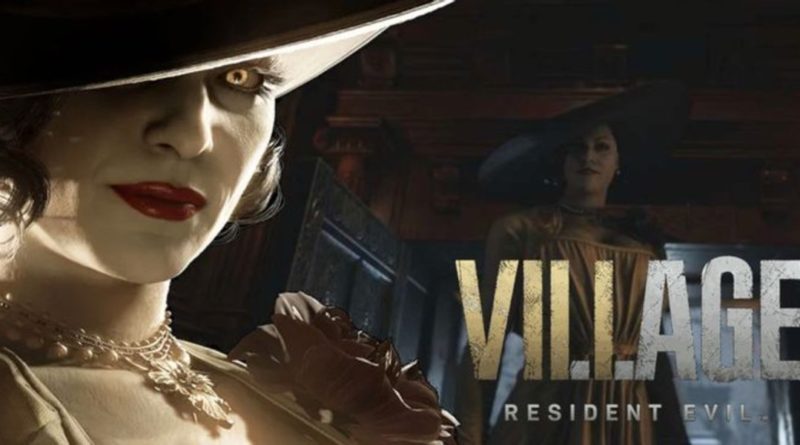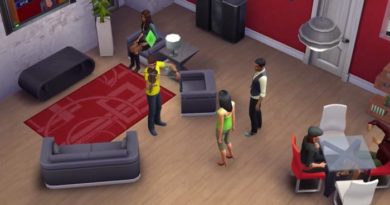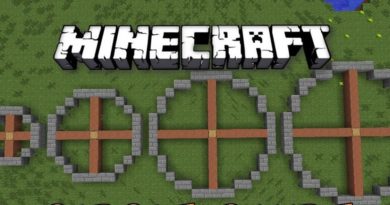Resident Evil Village Best PC Performance Settings
Resident Evil Village Best PC Performance Settings ,best resident evil village settings ,resident evil village presets; Escape Lady Dimitrescu at a smooth 60fps or more…
Resident evil villageThe dreary Baker family trades their farm for the gothic horrors of Castle Dimitrescu and the surrounding area, but you'll want all the squares you can to help Ethan Winters survive with yet another immortality.
The good news is that Village uses the RE Engine, which is still pretty new when it comes to game engines and debuted with its 2017 predecessor. PC, Nintendo Switch, and everything in between has already been shown in various Capcom games, including Devil May Cry 5, Monster Hunter Rise, and the recent Resident Evil remakes.
This means Village runs pretty well on most hardware; this is the best to run the game good graphics card or a to any GPU for that matter means you don't need it. You can simply stick a preset and start shooting lycans right away, or you can choose to prioritize performance, immerse yourself in ray tracing, or get the most lots of good mods You can mess around with town's worth of settings to give you enough space to install.
resident evilvillage, System Requirements It doesn't claim at least an Nvidia GTX 1050 Ti or AMD Radeon RX 560, but you can pretty much ignore these guidelines. Village is one of the most scalable games we've come across, making 60fps feasible on a much wider range of gaming hardware.
RESIDENT EVIL VILLAGE PRESETS
Instead of the usual low-to-high presets, Resident evil village gives you six to choose from. They all do what they say on the tin and come with explanations to help you choose the right one for your rig. You'll have to pick one from the main menu, however, as the game doesn't allow you to change presets at its thickest.
- Suggested – automatically adjusts all options based on available video memory on your graphics card. It takes up 5,78GB of space, but doesn't necessarily choose the best settings.
- Prioritize performance – turns off ray tracing and reduces demand without sacrificing image quality. This is for those experiencing framerate issues or running a GPU with 4GB of VRAM or less.
- Balanced – in the middle of work, it balances graphics and performance and recommends 4-8 GB of video memory. Sets VRAM to 4,82 GB.
- Prioritize graphics – image quality is best, minus ray tracing. It uses 5.78GB.
- ray tracing – this is cumbersome and only for those with a compatible graphics card. It fills 5,71 GB and has a dramatic effect on the frame rate.
- Max – raises all options as high as they can go. It doesn't recommend a specific amount of video memory, but pushes 12.212GB, which is higher than most graphics cards on the market.
prioritizes graphics Works well and presets for most modern gaming PCs balanced takes care of the rest. Max It's a reserved setting for RTX 3090s, Radeon RX 6800s, and RX 6800 XTs, as the settings menu shows that the preset exceeds 12,2GB – which is more than the RTX 3080 packs.
However, don't put too much stock in the Village's built-in gauge. It's nice to have a guide, but their calculations may not translate into obvious performance gains or decreases. For example, scaling the texture setting sees the VRAM jump significantly, but at a nominal cost in your actual framerate.
BEST RESIDENT EVIL VILLAGE SETTINGS
Priority graphics Using the preset as your base, here are some tweaks you can make to get the best settings for Resident Evil Village:
- Screen resolution : 1920×1080
- Vertical sync : closed
- render mode : normal *
- Image quality : 1.5
- FidelityFX CAS : open
- Anti-aliasing : FXAA + TAA
- variable rate shading : closed
- Texture quality : high (2GB)
- Texture filter quality : ANISO x4
- Knitting quality : middle
- ray tracing : high school *
- GI and reflection : high school
- Light reflection : high school
- Ambient Occlusion : closed
- Screen space reflections : open
- Volumetric lighting quality : high school
- Subsurface scattering : closed
- Shadow quality : high school
- contact shadows : open
- shadow cache : open
This includes display mode, viewing area, brightness, color space, bloom, lens flare, film noise, depth of field, lens distortion, and HDR mode are not included, as these do not affect performance noticeably, so you are free to tweak them as you wish without lowering your framerate. But if you have one of the best gaming monitors, you'll have a much better experience with HDR turned on, as it enhances the dark atmosphere of the village and blasts the royal reds and golds of Dimitrescu Castle.
fpsIf you want to increase the , you'll want to change the rendering mode to interlaced, as that can get you over an extra 30fps sharp. While this is the biggest gain of any setting, it doesn't come for free, as image quality takes a noticeable hit, which is why it's normal here.
Conversely, enabling ray tracing comes with the biggest performance tax as expected, and Nvidia's DLSS isn't here to help. Using the above settings Nvidia RTX 3080′with technology enabled 204fps'estate 118 fpsWe saw it fall, but Resident evil villageof a competitive FPS Given that it's not a game, stunning visuals and ambiance is a significant sacrifice with ray tracing – unless you prefer it to look like a PS1 game. There is virtually no difference between low, medium, and high reflections, so if you can digest the possible 42% drop in framerate, you can increase it. And if you can't, it looks amazing even without the game.
Variable rate shading is a feature that only came out a few years ago, meaning you'll need modern gaming hardware to get the most out of it. Nvidia's RTX'den or of AMD last Radeon GPUsEven if you have 's, it'll only get you an extra 10fps with its performance priority setting, but it sometimes makes the visuals a little grainier. It will reduce the frames you lose with sub-surface distortion, but here we recommend prioritizing the quality of the image and keeping both turned off.
Resolution is a harder beast, and the Village doesn't make navigating through them any easier, as a checkbox appears next to each one you brush through the menu. Even for the sake of choosing your starting resolution, you can make this a little easier on yourself by switching to borderless mode. We've kept everything at 1080p for a smoother ray tracing experience, but you may want to sacrifice a few frames to raise it a notch or go completely without ray tracing. Ultrawide users, be careful as I didn't find your performance tanking at 2560×1080 and 3440×1440 tanks with ray tracing turned on in the options.



